I can actually pinpoint the time when it all started: it was Saturday, July 16th 2007, at 10.30 in the morning when I saw my first Hakosuka in the metal, in the Shirakawa district of eastern Tokyo, just around the corner from the Edo Tokyo Museum. A scant 12 years of hooning around in my own Hakosuka have followed, and now that I’m selling it, it really does feel like the car is leaving me to rejoin a world that’s changed a lot. Everything is different, not just in the Hakosuka world, but also within the greater nostalgic car scene in Japan.
I’ll be honest. I didn’t buy the car in 2007 thinking that it would someday be collectible. In fact, I didn’t even get the impression that it was all that collectible in Japan at the time.
What started out as a short-term project ended up being lavished with a decade-long restoration and unholy injections of cash. At 12 years, it’s the longest I’ve owned any car. The next is a long way behind at six years (a Mazda Luce rotary). Now it has come time to sell the Hakosuka; further details are listed in the Australian CarSales advertisement (keep in mind those are Australian dollars) and more info than you could ever want is in the build thread. Foreign buyers are welcome; we can assist with the logistics of shipping and the car is sold on Sydney FOB shipping terms. Contact me in the comments and I’ll email you.
At the time when I bought the car, it didn’t feel like I was the custodian of some rare-groove collector car. Flip though the back pages of Option magazine circa 2007, and there’d be dozens of Hakosuka and Kenmeri advertised for sale at prices between $15,000 and $25,000 USD.
That last sentence might elicit a gasp today, but at the time plenty of the cars on sale weren’t really all that appealing. We’re talking geeky ride heights, strange mismatched wheel and tire choices, and weird mods. There was quite a big overlap between classic cars and what we would call kaido racer (or bosozoku-style) cars. You’d see Hakos with some eclectic mods, like yellow fiberglass racing seats, wooden steering wheels, center consoles hacked-out for Autometer gauges, fender mirrors removed and regular mirrors fitted to the doors, and so on. Sometimes they’d be all on the same car.
Call it a teenage drift car aesthetic. Pictured standing next to the car might be its proud owner. Usually it was a young guy with a huge grin clearly having the time of his life, but many of the cars looked more like low-buck hotrods than collector cars.
Of course, there were cars which were the full cliché: perfect fitment Watanabes, great stance, all the right trinkets, and lots of firepower under the hood. However, the “nice” cars mostly changed hands between friends or within car clubs, and were never advertised (this is still the case today). Only the top 10 percent of cars for sale would be super nice.
So when I bought my Hako, it was mainly for a bit of a laugh. I thought it would be a nice conversation piece at car meets and on forums for a little while, and then I’d sell it on. I figured I couldn’t lose my shirt if it was only thirty grand Australian in the first place. In the great catalog of my many poor life decisions, surely this wouldn’t be one of them.
I could have some fun with a car that would be a rare sight. At the time, it was the third Hako imported into Australia, and I’m pretty certain it was the first to be broadly photographed and written about in the English-speaking world. It certainly didn’t feel like I was taking away someone else’s national treasure, and it didn’t feel like there would be any sense of responsibility that came with the car. I mean, if fitting yellow fiberglass seats was somehow considered okay, then…
Today, it’s completely different.
Go and have a browse on Goo-Net (sort by age, fourth column from the left, click the downward facing arrow) and it seems like every single Hako on sale is the perfect, period-correct platonic ideal. Prices for coupes now start at $50,000 USD and that gets you a bone-stock, grandpa-spec car that needs everything to become the Hako that you see in your mind’s eye.
GT-R lookalikes begin at $65,000 USD and go up to $135,000, and most cars on sale have an “ASK” instead of disclosing a sale price (JNC Pro Tip: that never means it’s cheap). Actual S20-engined 2000GT-Rs begin at US$180,000. The prices we reported on in 2007 seem like they’re from a different world.
It’s all very serious, and anyone buying a Hako now has to contend with the feeling that it’s a responsibility and that everything has to be done right.
I often think about what brought this on. In the past decade, hundreds of Hakos have left Japan to be welcomed into new homes on foreign shores, thinning the herd of what was already a rare commodity in Japan. And, we’re at the point where every single car on sale in Japan looks absolutely awesome.
Was it the foreign demand that’s caused the shift in Japanese attitudes about these old classics? I’m not sure if that’s the case. Have a look at our S30 Z vs Hako prices in 2007, and you’ll see that they were roughly the same. This makes plenty of sense, as Zs and Hakos are both equally common in their home country, have a similar sporting heritage, appeal to the same kind of car guys, and require more or less the same care to keep on the road in Japan.
Browse Goo-Net for S30 Fairlady Z’s, though, and you’ll see that Z prices are pretty much in line with Hako coupe values. And like the Hakos on sale today, the majority of the Zs on sale look absolutely gorgeous. They’re all either Devil Z or 240ZG clones, and most cars look like they’ve had some decent coin spent on them, with the super nice examples being priced between $75,000-100,000 USD.
However, S30 Zs are plentiful in Europe, USA, and Australia, so I think it’s highly unlikely that foreign demand had any impact on JDM prices at all. In fact, Japan is probably the worst place to go if you want to buy a cheap Z.
These old Datsuns have become collectible in Japan all by themselves, and it’s fitting that they’re the most cherished in their homeland.
To me, this is a good thing. The cars may be more expensive to buy, but it means that it’s easier to justify the restoration costs. It also means that as prices continue to rise, at least you have a fighting chance of making some of that cost back.
More Japanese enthusiasts are getting into these old cars, the kind of guys who might have had their fun with 90s JDM supercars already. They’ve brought the same appetite for aftermarket parts with them, so now we have the same kind of mods available as newer JDM cars do. If you want track-ready coilovers, big brake kits, or LSDs, that’s all doable now.
Restoration is much easier and compared to back in 2007, the amount of reproduction and new OEM parts has increased tenfold. Even the retail experience has been transformed. If you’re in Kyoto, drop in to visit our good friends at MSpeed, and shop for your restoration parts in a showroom that looks like it could be a stylish clothing store.
That’s a good thing, and you don’t see yellow fiberglass seats and mismatched wheels any more.
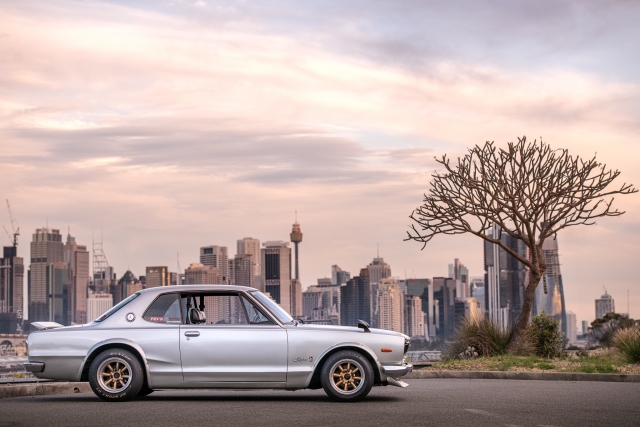
Typically, I’d throw myself into a project car for four years or so and then move onto the next thing, but the Hako had always had its hooks in me. It wasn’t the fastest, or most exotic, or the one with the flashiest badge, but it wasn’t always about the car. It was life that went with it.
Work trips would be detoured to Japan to accommodate nostalgic car events or race meets. Family vacations would mysteriously be pointed towards Japan and planned around car shop visits and parts shopping. Idle moments would be filled by googling techniques on how to tune Weber carbs and trawling Yahoo Auctions for much-needed rare bits. And I have a room full of books about Skylines that I can’t read, because they’re all in Japanese.
I said before that owning this Hako felt like a great responsibility. That’s how I’ve always felt, due in no small part to the Skyline’s many fans. Meeting them at car shows has been part of the fun. Buying the car may have started as a joke, but I ended up taking every step very seriously. So many people got upset about how I pronounced the word “Hakosuka”; imagine if I’d put the wrong wheels on it, or did something half-assed and blew it up!
Countless car shows, track days, drag meets, early morning mountain runs and impromptu midnight cruising all peppered my time with the Hako. We’ve done 45,000 km together, and she’s never missed a beat. It’s been satisfying to be able to savor something that I built myself, over the thousand or so hours spent turning spanners in the shed. I’ve loved every minute of it.
The build threads on a few forums crept up to 1.6 million views, so plenty of people were watching, and that instilled in me an obligation to do everything right. The Hako had to be as fast, as solid, and as beautiful as I could make it. It had to be worthy of its heritage.
All jokes aside, I never felt like the attention was a burden. It was just the opposite. The success of the build thread meant that plenty of really knowledgeable people came out of the woodwork to offer advice and help, and many have since become friends. This is one aspect of the car’s custodianship that I’ll fondly remember.
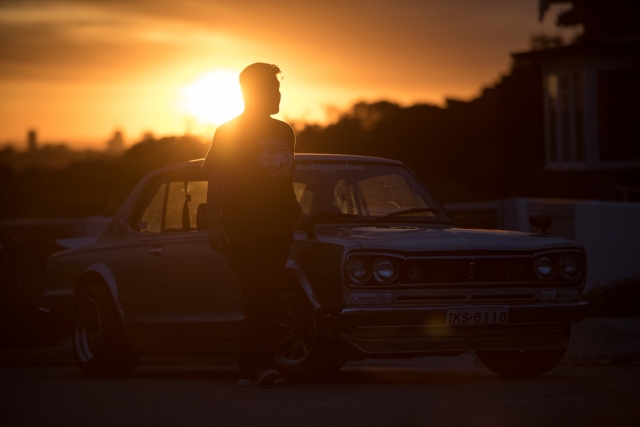
So why am I moving on? If you’re really passionate about something and have immersed yourself in it for a long time, then no matter how exciting it may be, eventually you do repeat yourself. While it’s been a wonderful privilege to be this car’s keeper, after 12 years it feels like there’s nothing more I can do.
I don’t often have great ideas, but on the rare occasion that I do have them about fabrication or making the car run, they’re already built into the Hako. This is as far as I can take it, and it’s time to pass it on to the next custodian.
There have been many great memories, lots and lots of friends, all wrapped around an old car. I’m going to start again with a new project where I can feel the excitement of making the car better, and to find new undiscovered things to geek out over. The car deserves someone who’ll be as passionate as I was at the beginning, but I’ll always be immersed in the Hako owner community and I won’t be far.
Goodbye, old girl.
Photos: Matthew Everingham



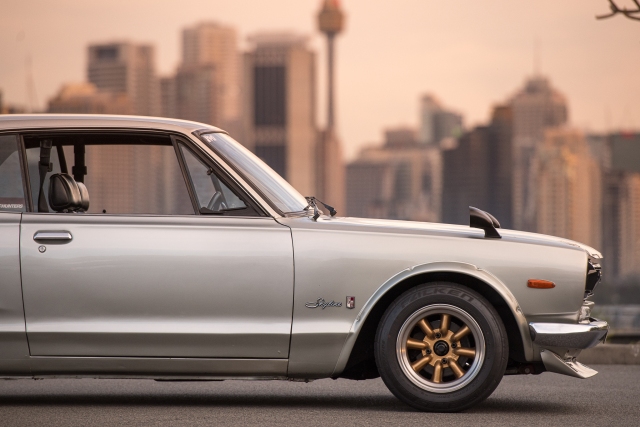

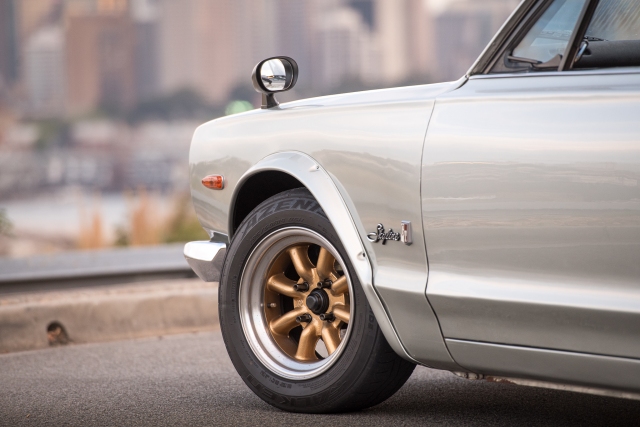
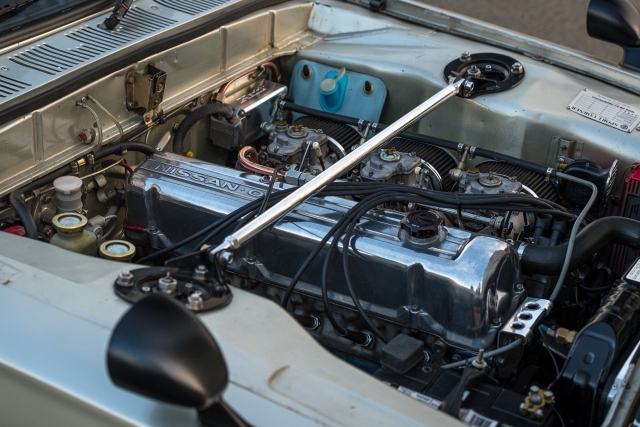

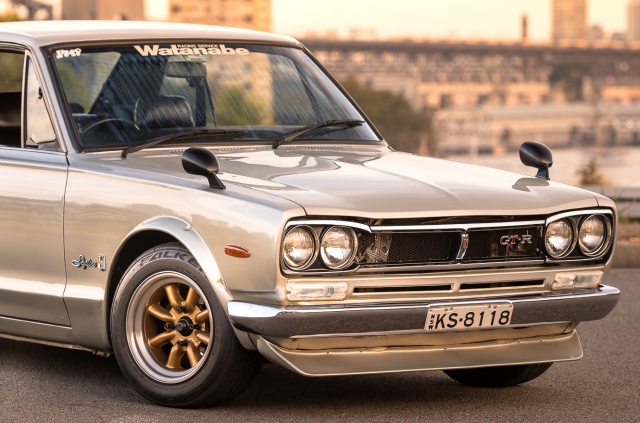
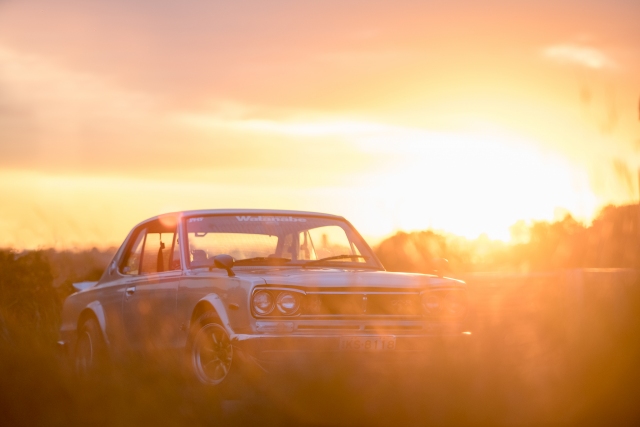






I’m 16 and need a car, you wanna HMU I got 2500$ lol
Wow. I mean, 12 years is a long time and your explanation makes complete sense. But it’s like… Kev’s Hako has always been a _fixture_ of the whole Japanese nostalgic movement. One of the unchanging
From the build thread – “Regular readers of the JNC blog will know that GrandJDM and JNC are now merged into one, due to the fatal hacking of GrandJDM about a month ago.” I remember reading about your Hako on GrandJDM first, then when it was hacked I somehow found my way here. I can’t believe it’s been 12 years !!
Nice photos for the ad 🙂
Good luck with the sale, and let’s hope for the right kind of owner who will continue to use, show and maintain her.
Wow, it’s been 12 tears allready?
I remember when You started posting Your story of sourcing that car from Japan, then prepering it for passing Australian regulations. Then the resto process begun, and every single post inspired me to work on my own car. Because “since He did that, why can’t I?” You gived me a push for many years. I’ve never comennted or wrote anything whorty in Your thread, but now’s the time to say it out loud: Thanks a lot. Seriously.
Ah Mr Kevin. This makes me a bit sad. Thankyou for the advice on my shortnose when i needed it a few years back; the JNC scene seems to be slowing thats for sure. All the best with the next project haha.
Brilliant car and owner!
https://youtu.be/oUj2ehptYnk
Great car, I live in Sydney and have probably seen your car at various events as SMSP without realising you were a contributor on this site. My bad.
BTW did you go to the WTAC and drifting at SMSP last Friday and Saturday. I took plenty of pics of both the show cars and drifting, send me an email if you want to put some up on this site?
I’ve gotta find a few hours to read your build thread. Well done on your passion for restoring the car so well and sharing it with us all.
The “custodian” phase sucks! Pretty antithetical to spirited motoring and anything exciting.
The prices are increasing because of everyone’s dismal view of the future for car enthusiasts.
It’s actually a very conservative time (psychologically) with faaar too many things being sanctified. Fewer executed, good ideas will do that, unfortunately!
There’s a UNfair amount of rose-tinting going on too. Some cars weren’t that great to begin with. There’s no way a S30 Z should cost $75k-100k…that platform just isn’t worth it PERIOD.
Bizarre.
I had a chance to buy a legit KPGC10 with the S20 for under USD$30K a great many years ago. I really regret not purchasing it, since it has always been one of my dream cars. I don’t regret at all what I did with the money though, which was move to Japan, study the language and work there (and later move to other countries in Asia as well). That was the best decision of my life, and the best time I’ve had. Memories I created, and life experiences that I will never have the opportunity to do again. Still, I wish I could have done both.